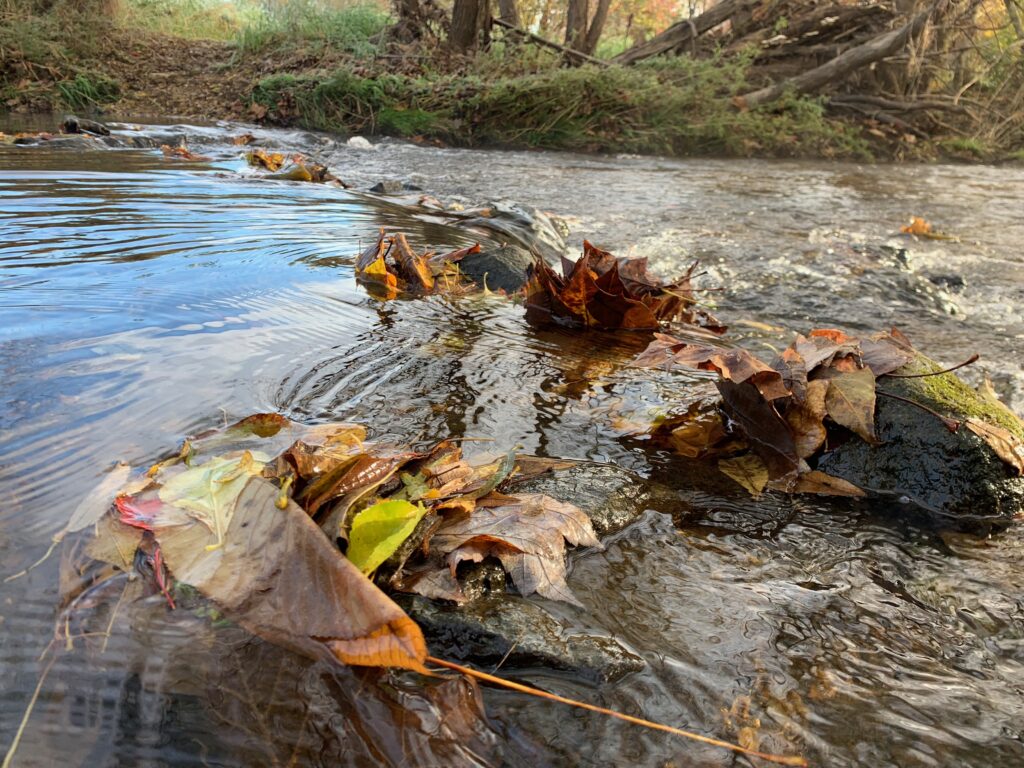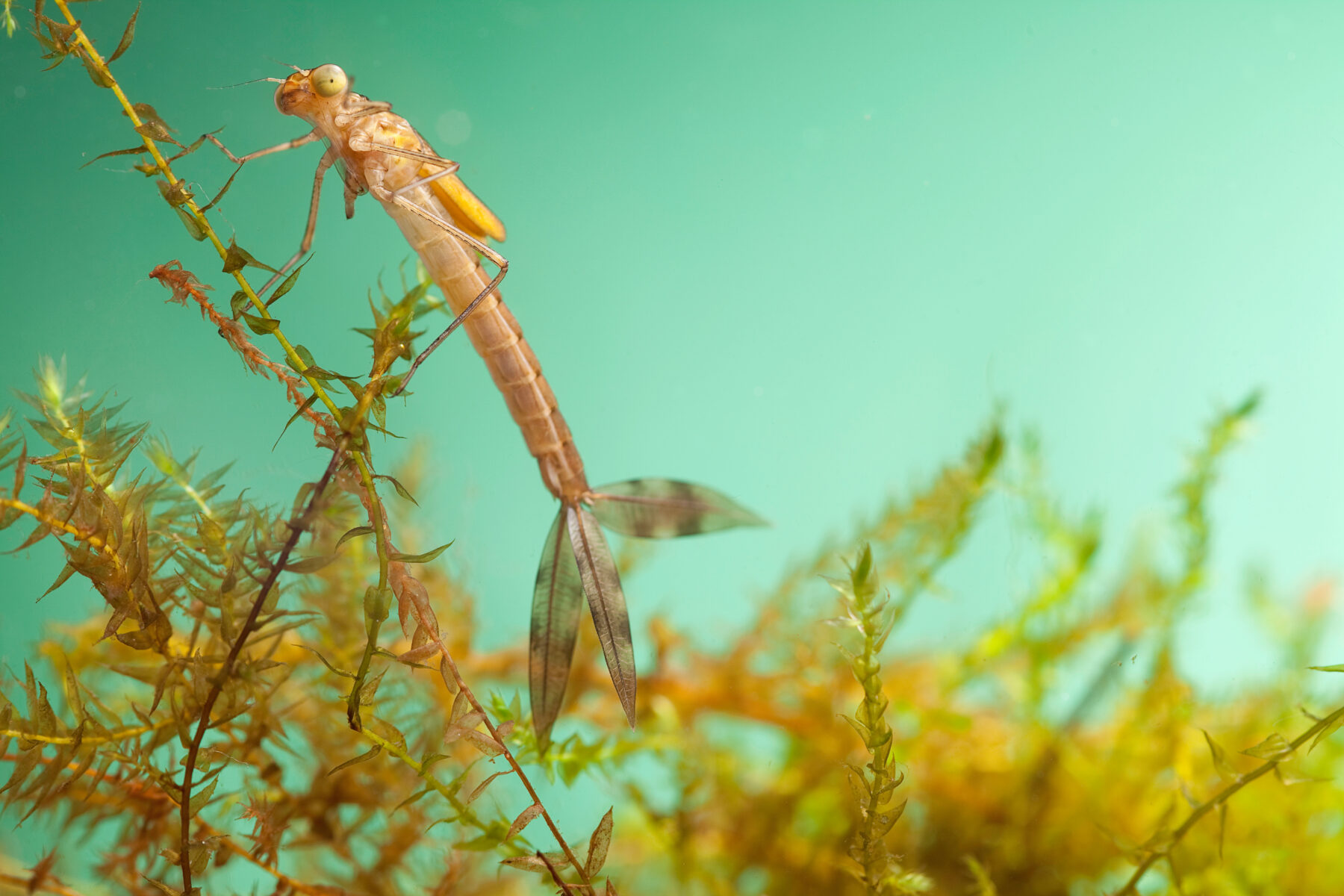
With the arrival of Fall, the landscape is decorated with the splendid hues of vibrant leaves. Yet, when these leaves fall and begin to float downstream, they assume a pivotal ecological role within our waterways. The leaves that drift into the stream offer food and shelter to aquatic organisms, whilst simultaneously enriching the water with nutrients and organic materials.
This process embodies the transfer of forest materials and energy from the streamside forests, known as riparian zones, to the adjacent stream. Leaf packs, which are naturally found in streams, can be used to assess a stream’s health and biodiversity.
What are Leaf Packs?
Leaf packs are the accumulation of leaves that fall into a stream and float downstream until they land against a rock or woody debris and form a bundle of leaves, typically within a riffle. Riffles are the shallow areas of a stream characterized by swiftly flowing water and serving as habitats for aquatic insects.
Over the course of several weeks submerged in water, the leaf surfaces are colonized by bacteria and fungi, initiating the decomposition process. As these bacteria and aquatic fungi start decomposing the surfaces of the leaves, freshwater macroinvertebrates will enter the softening leaf pack and begin to further break it down.

Leaf packs serve as a natural habitat for macroinvertebrates, providing cover from predators and source of food. Macroinvertebrates are organisms that are large enough to be seen with a naked eye and lack a backbone (vertebrae). Examples of freshwater macroinvertebrates include aquatic insects (caddisflies, mayflies, and stoneflies), crayfish, snails, worms, and clams.
Macroinvertebrates are ecologically important and serve a variety of roles; they constitute the base of the food chain and energy source for predators (fish, birds, other insects), break down organic matter and cycling nutrients, and serve as a biological indicator for water quality. Macroinvertebrates are sensitive to changes in water quality and are classified into different tolerance groups based on their sensitivity to pollutants and environmental conditions.
Using Leaf Packs to Assess Stream Health
Leaf pack sampling is one method used to assess the water quality and ecological health of a stream. Macroinvertebrates are commonly used as bioindicators because they are relatively easy to sample, are affected by physical and biological changes, and demonstrate short-term or long-term effects of pollution.
Macroinvertebrate fun fact: Did you know that dragonflies are the most successful predators on the planet. Whether they’re a nymph in the water or an adult in the air, they have up to a 97% success rate when hunting!
Observing the number of organisms and biodiversity provides valuable insights into a stream’s overall health, including pollution tolerance, biodiversity, and nutrient levels. Pollution-sensitive macroinvertebrates (such as most caddisflies, water penny, and stonefly nymphs) tend to dominate in healthy, pristine streams, while pollution-tolerant species (such as midge larva, leeches, and flatworms) are more prevalent in degraded or polluted waters. Changes in the diversity or abundance of aquatic organisms over time can also indicate the effects of human activity or other environmental changes. Check out this dichotomous key which can help you identify some of the most common macros.
The annual amount of leaves and woody debris in a stream is also critical in determining stream health and serves as an essential stream habitat feature. Without leaves and woody debris, waterways lose a significant source of naturally occurring organic matter and energy, disrupting the intricate food web that depends on them. Additionally, this may lead to decreased biodiversity, affecting the abundance and diversity of aquatic life.
A riparian buffer is not only helpful for streambank stabilization and erosion prevention but also provides the necessary resources and structural support for macroinvertebrates and other life to thrive. This reinforces the importance of maintaining a healthy riparian zone with diverse and native vegetation growing along stream banks. So the next time you see small bundles of fallen leaves in a stream, think of the small critters that call leaf packs a home!
